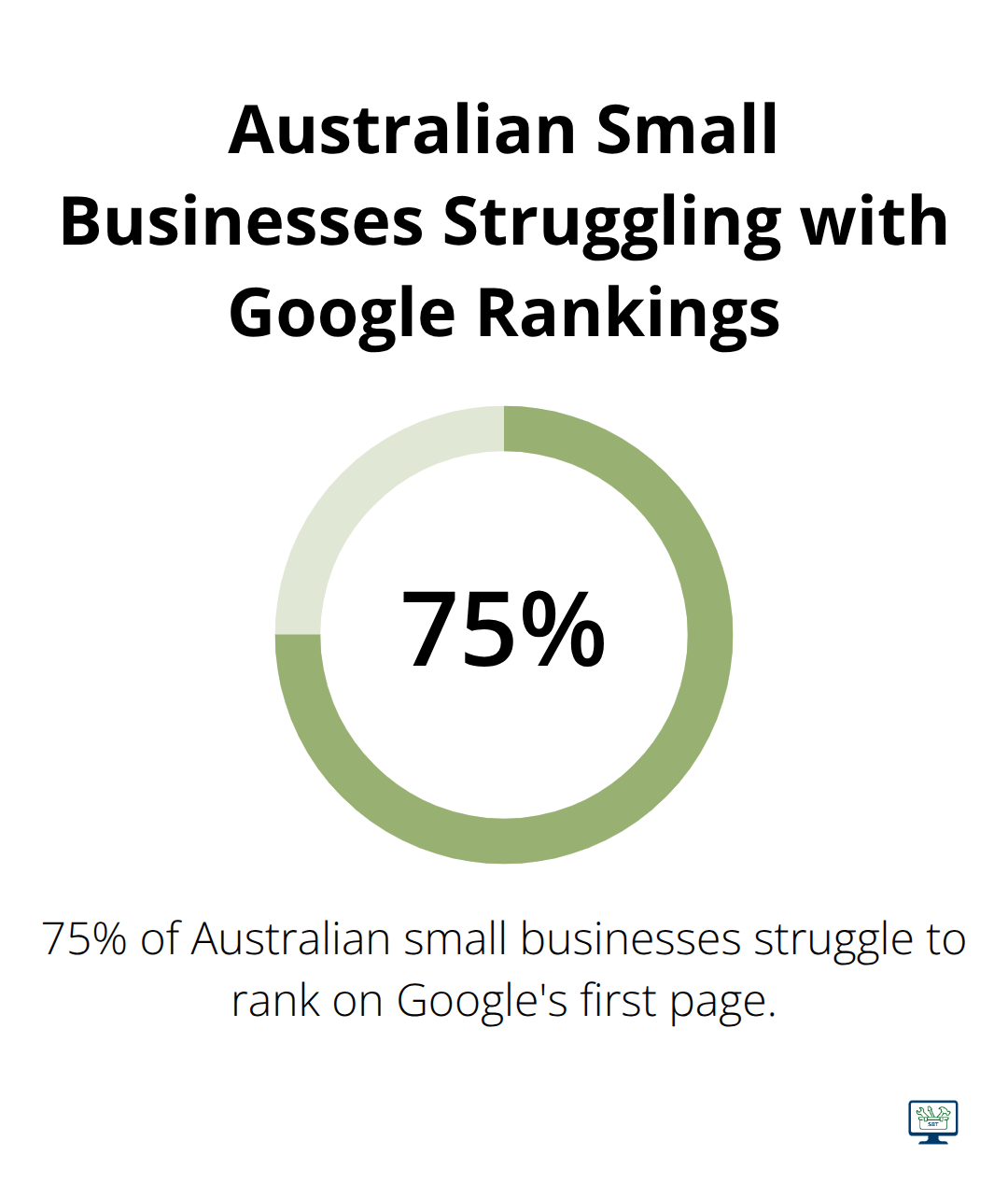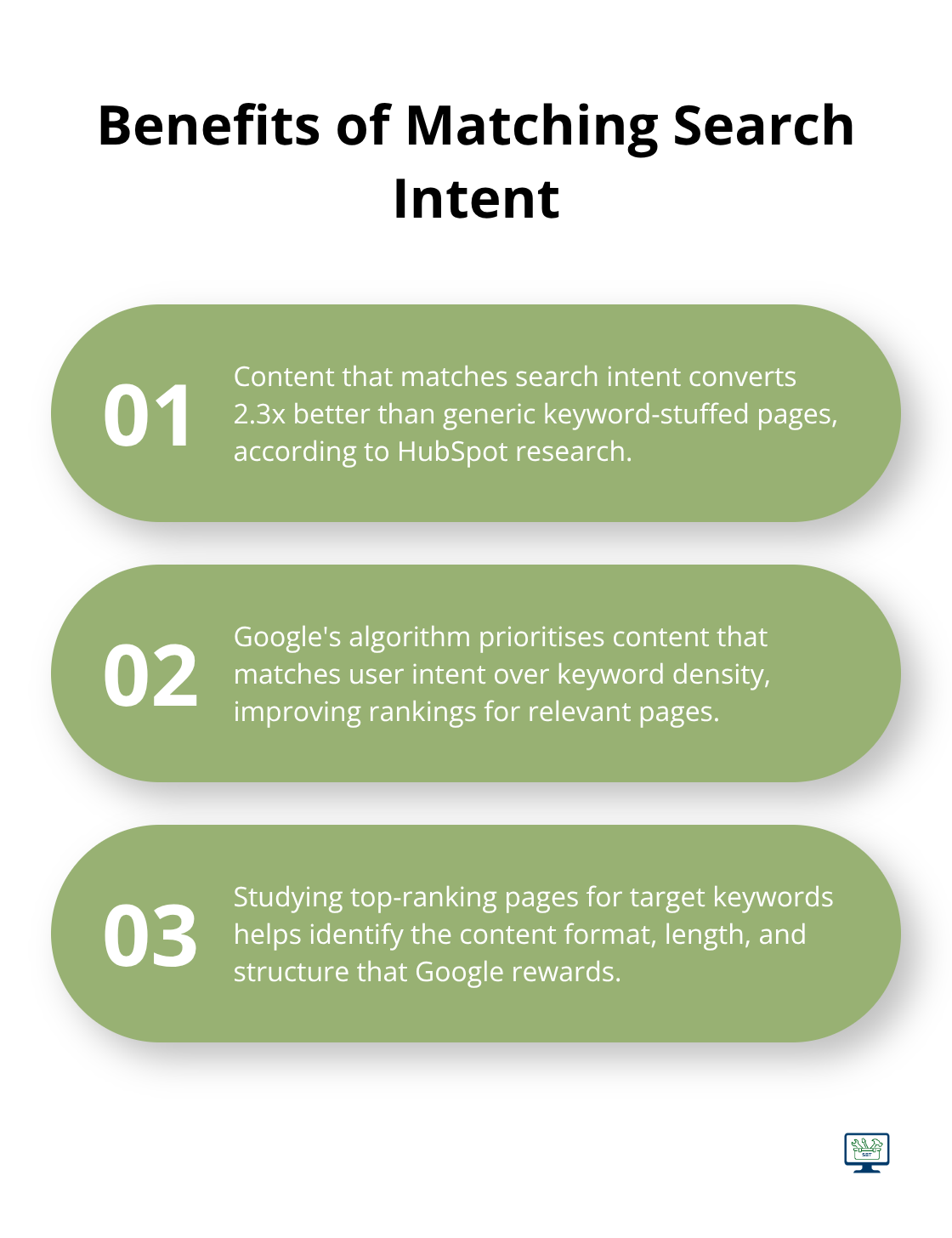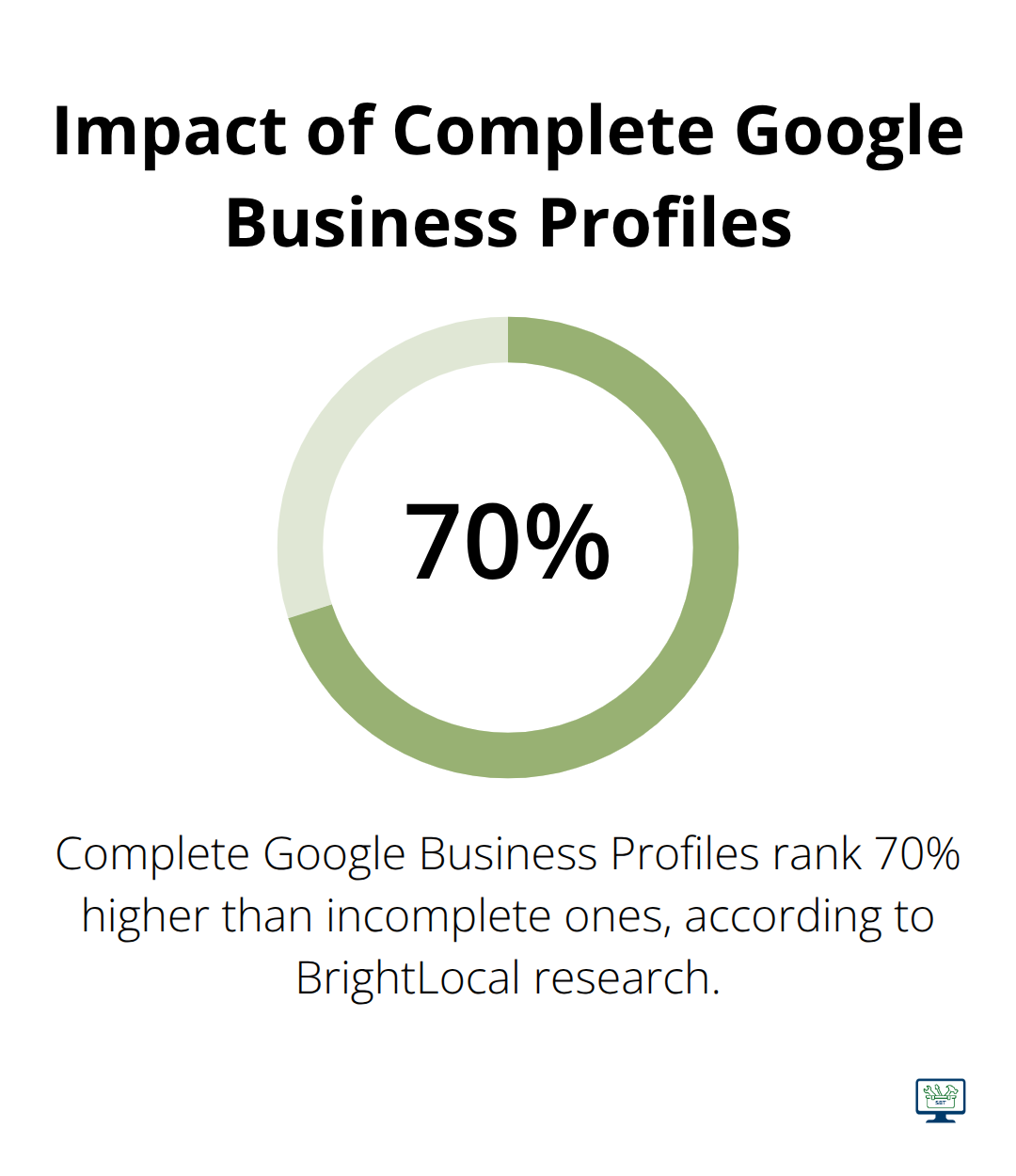How to Boost Your Website’s Organic SEO Rankings

Published On Sep 17,2025
Organic SEO remains the most cost-effective way to drive qualified traffic to your website. Yet 75% of Australian small businesses struggle to rank on Google’s first page.

We at WebsiteStrategies have helped hundreds of local businesses transform their online visibility through proven SEO strategies. This guide covers the technical foundations, content tactics, and authority-building methods that actually move the needle.
What Technical Foundation Does Your Website Need?
Google’s algorithm evaluates over 200 ranking factors, but three technical elements consistently determine whether Australian small businesses rank or disappear into digital obscurity. Site speed directly impacts your bottom line, with Google data showing that pages that load in under 2.5 seconds achieve 70% higher conversion rates than slower alternatives. Core Web Vitals became official ranking signals in 2021, measuring Largest Contentful Paint, First Input Delay, and Cumulative Layout Shift. Websites that score above 90 on Google PageSpeed Insights typically rank 40% higher than those below 50.
Speed Optimisation That Actually Works
Compress images to WebP format and implement lazy loading to reduce initial page weight by up to 60%. Enable browser caching and use a content delivery network to serve static files faster across Australia’s diverse geography. Remove unused CSS and JavaScript, as Lighthouse audits reveal that 85% of small business websites carry unnecessary code bloat. WordPress sites benefit from caching plugins like W3 Total Cache, whilst Shopify stores should optimise theme code and limit third-party apps to essential functions only.
Mobile-First Design Requirements
Google’s mobile-first indexing has fundamentally transformed search rankings, meaning your mobile version determines desktop rankings. Responsive design isn’t optional when 68% of Australian web traffic comes from mobile devices (according to Statcounter data). Test your site with Google’s Mobile-Friendly Test tool and fix viewport issues immediately. Implement touch-friendly navigation with minimum 44-pixel tap targets and avoid Flash or pop-ups that frustrate mobile users.
Technical Architecture Excellence
Create XML sitemaps that contain your most important pages and submit them through Google Search Console for faster indexation. Structure URLs logically with hyphens instead of underscores, keeping them under 60 characters for optimal crawling. Implement proper heading hierarchy with single H1 tags and logical H2-H6 progression. Fix broken internal links and 404 errors, as these signal poor site maintenance to search engines and damage user experience significantly.
These technical foundations create the platform your content strategy needs to succeed. Quality content built on shaky technical ground will never reach its ranking potential, which leads us to the strategic approach that transforms visitors into customers.
What Content Strategy Actually Ranks?
Keyword research transforms from guesswork into science when you understand search intent patterns. Most keywords receive limited search volume, which means Australian small businesses waste resources on impossible terms. Focus on long-tail keywords with 100-1,000 monthly searches and commercial intent. Use SEMrush or Ahrefs to identify keywords where competitors rank 4-10, as these represent achievable opportunities. Search Console reveals which queries already bring traffic to your site – expand these wins with related content that answers deeper questions your customers ask.
Search Intent Alignment That Converts
Google’s algorithm prioritises content that matches user intent over keyword density. Users who search informational queries like “how to fix” need step-by-step guides, whilst commercial terms like “best plumber Brisbane” require comparison content with clear contact information. HubSpot research indicates that content which matches search intent converts 2.3x better than generic keyword-stuffed pages. Study the top 3 results for your target keywords and identify the content format, length, and structure that Google rewards. Create content that provides more value than current results through deeper insights, recent data, or local Australian examples.

Content Clusters Build Topic Authority
Build topic clusters around your core services through pillar pages that comprehensively cover broad subjects, then link to specific subtopic pages. This structure signals topical authority to Google and keeps visitors engaged longer. Strategic internal linking helps establish content relationships and improves rankings. Create content hubs where your main service pages link to supporting blog posts, case studies, and FAQ sections. Each cluster should contain 5-10 interconnected pages that thoroughly explore every angle of your expertise (establishing your business as the definitive local resource).
Quality Content That Google Rewards
Write content that prioritises human readers over search engines, as Google’s algorithm has become sophisticated enough to detect artificial keyword stuffing. Pages with 1,500+ words typically rank higher than shorter content, but only when the length serves user needs rather than arbitrary word counts. Include recent statistics, local Australian case studies, and actionable advice that readers can implement immediately. AI writing tools can help produce more content efficiently while maintaining quality. Update existing content regularly with fresh data and insights, as Google favours websites that demonstrate ongoing expertise and relevance in their field.
This content foundation requires strategic promotion and authority signals to reach its full ranking potential, which brings us to the off-page factors that separate successful businesses from their competitors.
How Do You Build Real Authority Online?
Authority signals determine whether Australian small businesses rank above established competitors or remain buried on page three. Digital PR generates high-quality backlinks through strategic outreach to industry publications, local news outlets, and relevant blogs that actually influence your target market. Create newsworthy content like industry surveys, local economic reports, or expert commentary on trends within your sector. Journalists from Business News Australia and regional publications actively seek local business insights for their stories.
Strategic Digital PR That Works
Pitch your expertise to podcasts, guest post opportunities, and events that naturally earn editorial links from authoritative domains. HARO connects Australian businesses with journalists who seek expert quotes, which results in backlinks from major publications when your insights get featured. Focus on publications that your target customers actually read rather than chasing high domain authority sites with irrelevant audiences. Local newspapers, industry magazines, and business journals offer more valuable links than generic guest post sites.
Google Business Profile Optimisation Changes Everything
Your Google Business Profile influences local search rankings more than any other single factor, with complete profiles ranking 70% higher than incomplete ones according to BrightLocal research. Upload high-resolution photos of your storefront, team, and work examples every month to maintain profile freshness. Respond to every review within 24 hours, as Google rewards active engagement and potential customers trust businesses that address feedback promptly. Post weekly updates about services, offers, or industry insights to increase profile visibility in local searches.

Category Selection and Attributes Matter
Select accurate business categories and add relevant attributes like wheelchair accessibility or appointment availability to match specific search queries. Google uses these signals to determine when your business appears in local searches. Choose your primary category carefully (as it carries the most weight) and add secondary categories that accurately describe your services. Encourage satisfied customers to leave reviews through follow-up emails or text messages, as profiles with 100+ reviews rank significantly higher than those with fewer than 25 reviews.
Reviews Drive Rankings and Revenue
Online reputation management directly impacts both search rankings and conversion rates, with consumers reading online reviews before making purchase decisions. Negative reviews damage rankings when left unaddressed, whilst thoughtful responses demonstrate professionalism to both Google and potential customers. Monitor mentions across Google, Facebook, industry directories, and review platforms to catch feedback early. Address negative reviews professionally by acknowledging concerns, offering solutions, and inviting private communication to resolve issues. Effective small business marketing strategies help maintain positive online presence whilst managing costs.
Final Thoughts
Track specific metrics that directly impact your business revenue to measure organic SEO success. Monitor organic traffic growth, keyword ranking improvements, and conversion rates through Google Analytics and Search Console. Australian small businesses typically see meaningful results within 3-6 months, with traffic increases of 45% or more achievable through consistent implementation.
The biggest organic SEO mistakes involve chasing quick fixes instead of building sustainable foundations. Keyword stuffing, buying low-quality backlinks, and neglecting mobile optimisation destroy long-term rankings. Focus on user experience over search engine manipulation, as Google’s algorithm rewards websites that genuinely serve their audience.
Sustainable organic growth demands ongoing commitment rather than one-time optimisation efforts (update content regularly with fresh insights, maintain technical performance, and continue building authority through quality backlinks and positive reviews). Small businesses that treat SEO as an ongoing investment rather than a project consistently outrank competitors who abandon their efforts after initial improvements. We at WebsiteStrategies help Australian SMEs through this process with comprehensive SEO strategies that translate complex technical requirements into actionable business growth plans.
